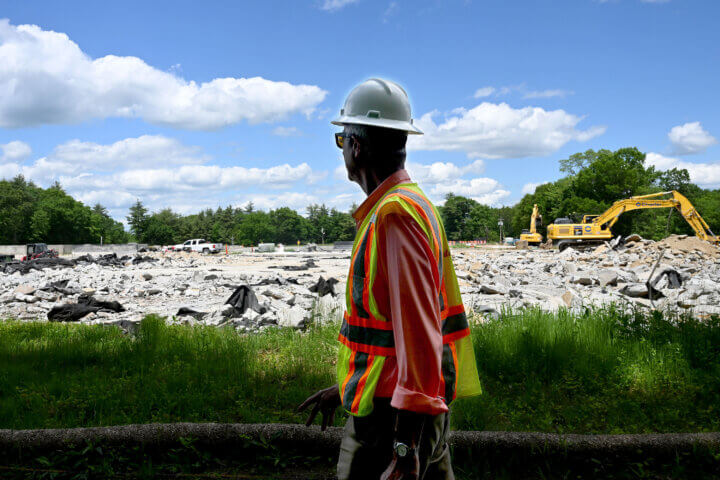I was nearly finished with my column (on owls), when I saw the exciting headline about the “COP15 Summit” and the recent agreement signed by 190 countries pledging to protect global biodiversity. The next thing I saw on my phone was this quote by Jared Anderson. It stopped me cold.
“An ant crosses your carpet. A spider weaves a pattern older than mammals beneath your stairs. Just nod, breathe, and think, “Good. It’s all still here. The forest, the mountains, the desert. At home in my home.” The sterile white box is the stranger. Not the ant. Not the spider.”
This news story and quote about nature inside our houses got me thinking about “biodiversity” and why it’s so important to look beyond the literal and figurative walls of our human-centric lives. The owls will have to wait until next month.
Biodiversity is, “the variety of life in the world or in a particular habitat or ecosystem”. This quote from Zurich.com explains it’s importance well and the connection to our own survival.
“Biodiversity is vital to life on our planet. It is essentially the life support system for humanity. From our oceans to our forests, nature underpins the world’s food system; provides fresh water; sustains the quality of the air and soils; regulates the climate; provides pollination and pest control; absorbs carbon emissions and reduces the impact of natural hazards.” Big stuff. Our actions are threatening biodiversity and the scope of the problem can be daunting to comprehend.
It is estimated that there are about 100 million species of plants, birds, animals, insects, fish, reptiles, etc., on the planet. For context, we have identified only about 2 million. While extinction occurs naturally, we have put a thumb on the scale and accelerated this dramatically to between .01 and 1%. This means that, just among the named species, between 200 and 2000 species now go extinct every year. If we use this same math and apply it to the higher number of species, between 10,000 and 100,000 species go extinct annually. These numbers are so dramatic that some scientists are calling the period we are in now a global mass extinction event.
Extinction is final but we can also look at the drop in animals remaining. The numbers are just as dire. In just the last 50 years, animal populations in the Living Planet Index (5200 species) are down 69%, globally. In geologic time, this is a fraction of the blink of an eye. In Latin America (includes the Amazon), animals indexed are down 94%. Here in North America, we are doing far-better with a drop of 20%. Some good news, relatively speaking.
According to UN data, the percentage of land mass on earth cleared and converted for/to human use was 7.6% in 1800 and the population was 900M. By 2000 this percentage jumped to 39.3% and there were 6.1 billion people. By 2100 there will be 12 billion people and it’s not hard to extrapolate that that means for areas of the earth suitable for other species. We are logging and burning and selling and growing at a rate that is unsustainable and that now threatens not only the wild species on earth, but our own existence.
Explorer John Josselyn was in the Boston area in 1638 and gave us a glimpse of the animal life here, “Great auks swam in Massachusetts Bay, wolves and mountain lions roamed the surrounding woods, and overhead flew millions of passenger pigeons, in flocks “so thick,” wrote Josselyn, “that I could see no sun.” In the Charles River, huge beds of foot-long oysters prevented larger ships from sailing upstream.” The great auks and passenger pigeons he saw were hunted to extinction and the wolves and mountain lions now inhabit a tiny fraction of their historical range, extinct locally. Ouch.
But, while we have impacted our area significantly, there is also some good news and New England is a success story, regarding reforestation and the resultant return of biodiversity. If you look at old local photographs from the turn of the century, our area is unrecognizable from what it looks like today. It was 70% denuded of trees, cleared for sheep and hungry timber mills. As our local forests have returned, so have many animal species. While the big predators John Josselyn wrote of are still gone, black bear, whitetail deer, coyotes, wild turkey, and the fishers I wrote about last month are all rebounding, along with many other species.
The loss of global biodiversity can be a bummer to talk about and it’s easier to avoid the topic. But, as we move farther and farther away from our recent agrarian and hunter-gatherer past, we are losing the connectivity to nature that fuels our willingness to protect it. This link to the natural world is becoming frayed. If it breaks, our ability to understand the value of biodiversity may also be broken.
So, what can we do? In my opinion, we can teach our children about the natural world, in all its equal parts, including the destruction we have wrought. An excellent book on Amazon called “The Magnificent Book of Extinct Animals” can serve as a teaching tool.
This can be tough-stuff, but only by learning from the lessons about the past can future generations not repeat these ecologically-ignorant mistakes. Yes, there is sadness built in, but these are necessary conversations. Try it – you may be surprised by your child’s ability to comprehend this loss and the way it can be used as a lesson.
Our tiny planet, with its thin protective atmosphere, does not have borders or countries. These “lines on a map” and disagreements about economics and biodiversity are human-created departures from the macro-level reality of life on earth. This is why the COP15 agreement is so important, as an example of nations coming together to try to save the incredible biodiversity of our planet. It’s also why you should try to see that spider’s web under the stairs as a reminder to spend some Time Outdoors over the holidays, teaching your children about the natural world all around us, including the tough lessons about extinction and biodiversity loss. Who knows, maybe they will lead the youth delegation to a future global biodiversity summit someday?





